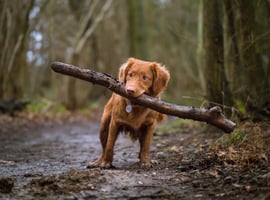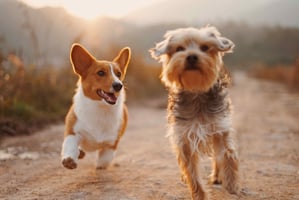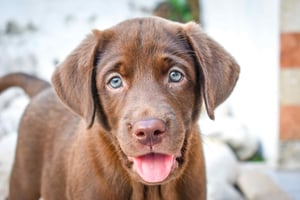The Bluetick Coonhound is a loyal, high-energy breed that requires a lot of exercise and training....
Coonhound Training: A Comprehensive Guide
Coonhound training is an essential part of owning a coonhound, as these energetic and independent hounds need to learn the rules of their human family. This comprehensive guide will cover the basics of coonhound training, including how to teach them obedience commands, proper socialisation and housebreaking. Additionally, we'll discuss the importance of positive reinforcement and tips for getting the most out of your coonhound training sessions.
Understanding Coonhounds
Coonhounds are a type of hound bred to hunt raccoons. They are energetic and intelligent, but can also be independent and stubborn. Because of their natural hunting instincts, coonhounds need to be trained to know the rules of the home. This will help them understand boundaries, learn proper socialisation and prevent bad behaviour.
Coonhounds are also very active, so it is important to give them plenty of exercise and mental stimulation. This will help to keep them occupied and prevent them from developing bad habits. Taking your coonhound on regular walks, playing fetch, and providing interactive toys are all great ways to keep your coonhound entertained and engaged.
Getting Started with Coonhound Training
Before you start coonhound training, it is important to have all the necessary supplies. This includes a training collar, leash, treats, and toys. You will also need to create a positive training environment by using rewards-based methods. This means using treats and praise to reward your coonhound for good behaviour rather than punishing them for bad behaviour.
Once you have all the necessary supplies and have created a positive training environment, you can start to teach your coonhound obedience commands. The most important commands to teach are sit, stay, come, and down. You can also teach them other commands such as leave it and drop it.
Socialisation and Housebreaking
Socialisation is an important part of coonhound training. It is important to expose your coonhound to different people, animals, and environments. This will help them to become comfortable with different situations and prevent them from becoming anxious or aggressive. Taking your coonhound to the dog park, introducing them to new people, and having them interact with other animals are all great ways to socialise your coonhound.
Housebreaking is also an important part of coonhound training. It is important to be consistent when housebreaking your coonhound. Take them outside to the same spot each time and reward them for going in the correct spot. It is also important to clean up any accidents as soon as possible to prevent them from happening again.
Tips for Getting the Most Out of Coonhound Training
Coonhound training can be challenging, but there are a few tips you can use to make it easier. Here are some tips for getting the most out of your coonhound training:
- Be consistent: It is important to be consistent when training your coonhound. Stick to the same commands and provide rewards for good behaviour. This will help your coonhound understand what is expected of them.
- Keep training sessions short: Training sessions should be short and sweet. This will help to keep your coonhound engaged and prevent them from getting bored or overwhelmed.
- Use positive reinforcement: Positive reinforcement is key when it comes to coonhound training. It is important to reward your coonhound for good behaviour rather than punishing them for bad behaviour.
Conclusion
Coonhound training is an essential part of owning a coonhound. This comprehensive guide has covered the basics of coonhound training, including how to teach them obedience commands, proper socialisation and housebreaking. Additionally, we discussed the importance of positive reinforcement and tips for getting the most out of your coonhound training sessions.
Coonhound training can be challenging, but with patience and consistency, it is possible to teach your coonhound the rules of the home. By providing them with plenty of exercise and mental stimulation and using positive reinforcement, you can help your coonhound become a happy and well-behaved member of the family.



